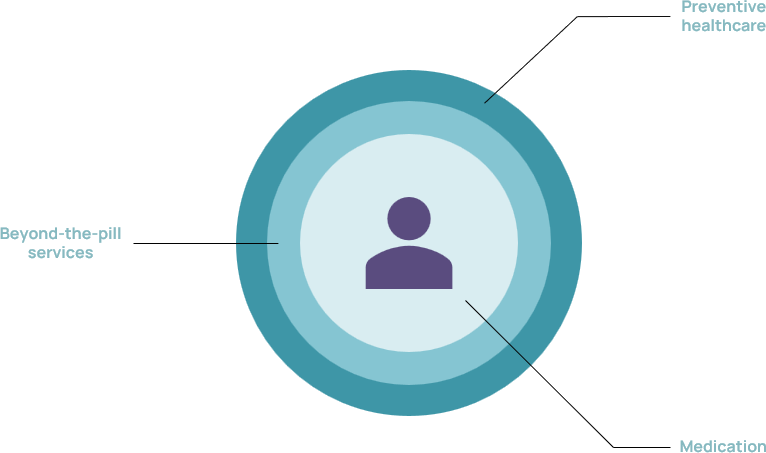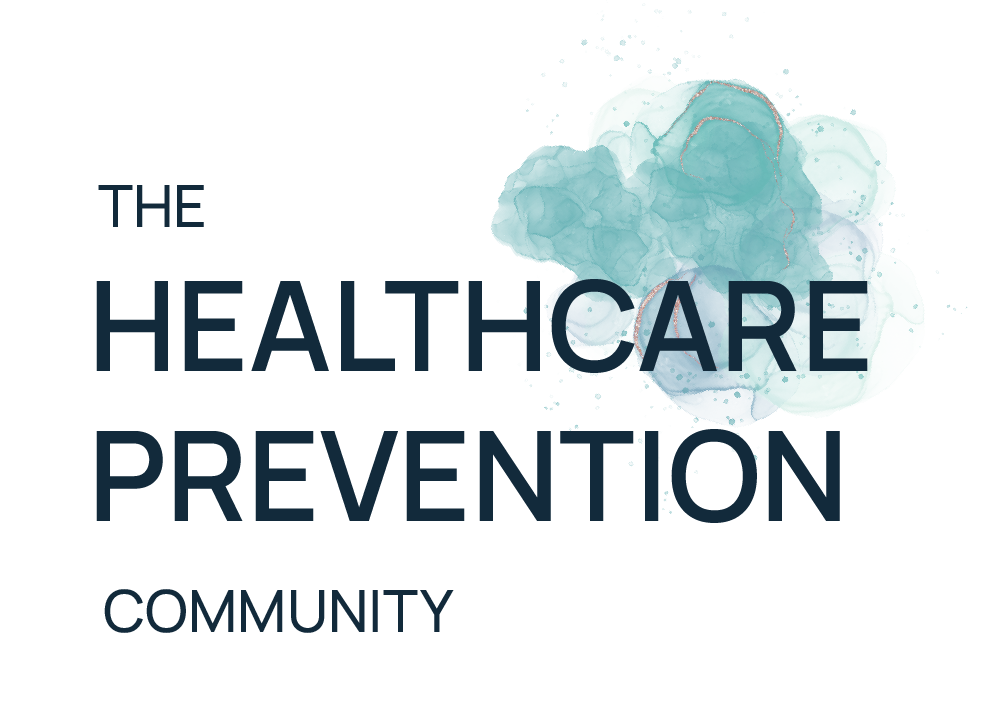Mission
partners
PREVIOUS EVENTS
prevention
Discover how the entire healthcare ecosystem of public, private stakeholders and population is transforming preventive care
During the last decades, the pharma industry has experienced an evolution on its perspective towards public healthcare.
Lately, patients have become the center of most health solutions, marking a shift away from the traditional drug-centered approach.
This change has also transformed the pharmaceutical industry into a Beyond the pill service provider.

But what if we go further?
With Preventive Care, we can extend the ‘Beyond the pill’ to ‘Before the pill’
During the last decades, the pharma industry has experienced an evolution on its perspective towards public healthcare.
Lately, patients have become the center of most health solutions, marking a shift away from the traditional drug-centered approach.
This change has also transformed the pharmaceutical industry into a Beyond the pill service provider.

But what if we go further?
With Preventive Care, we can extend the ‘Beyond the pill’ to ‘Before the pill’
During the last decades, the pharma industry has experienced an evolution on its perspective towards public healthcare.
Lately, patients have become the center of most health solutions, marking a shift away from the traditional drug-centered approach.
This change has also transformed the pharmaceutical industry into a Beyond the pill service provider.

But what if we go further?
With Preventive Care, we can extend the ‘Beyond the pill’ to ‘Before the pill’
WHY
During the last decades, the pharma industry has experienced an evolution on its perspective towards public healthcare. We have progressively moved from a drug-centred to a patient-centred approach, which has transformed the pharma industry model into a Health solutions provider under the concept of “Beyond the pill” to a more long-term sustainable structure.
However, there is a perspective that is receiving increasing interest and investment that can improve the population’s health while maintaining the system sustainability: this is prevention.
What if the Pharma industry can reduce the appearance of severe diseases while still being a key player in the healthcare environment?
mission
We are a prevention community of private and public players in the healthcare environment.
We have unified our efforts to make a paradigm shift that strengthens preventive care to develop a healthier society through a sustainable system.
members
institution
Private Entities

Private entities include pharmaceutical, diagnostic and other healthcare-related companies aiming to improve society’s health through their business.
These companies can dedicate large investments for research and provide effective and safe solutions to help disease prevention.
Private entities support preventive care by providing solutions like vaccines, diagnostic tests, and preventive medications, helping patients stay healthier longer.
Public Entities

Public entities include government organisms, public hospitals, public health agencies and educational institutions.
These organisms can provide regulatory frames, economic support and basic research to develop and execute preventive care strategies.
Public entities benefit from preventive care by enhancing productivity, improving society’s health and increasing health science knowledge.
General Audience

The general audience include patient associations, schools, individual patients, etc.
This public can both incorporate preventive strategies and promote them, being itself a channel of communication.
The general audience benefits from preventive care by increasing its QOL and reducing acute and chronic diseases risks.
strategy
Enhancing quality
of life
To help patients
No patient enjoys their disease. Either it’s an acute or a chronic illness, the process reduces the quality of life of the individual and their close ones.
The main pillar of preventive care is improving the society’s Quality of Life by reducing the frequency and severity of disease processes.
Decongesting the Healthcare System
To help HCPs
Healthcare professionals are overwhelmed by the large flux of patients with different conditions. While some tasks are being derived (for example, to pharmacists), the optimal scenario should let HCPs the adequate time to help their patients.
A preventive approach can help freeing HCPs’ schedules from patients with preventable diseases, thus offering quality time to the remaining patients.
System
Sustainability
To help the society
Curative care is a reactive strategy that involves a large, suboptimal economic investment. This compromises the sustainability of the public healthcare system.
Preventive care reduces healthcare costs and improve society’s productivity due to disease prevention. For every 1€ spent on preventive care, there can be savings of up to 4€ in curative healthcare costs.
Collaborative
Implication
To help healthcare players
Switching to a more preventive approach requires the collaborative participation of all parts including public (government, HCPs, medical societies, patient associations) and private (pharmaceutical and diagnostic industries) players.
Through this collaboration, both parts can benefit from this innovative strategy while increasing the society’s health.
Know more about the Prevention Day, the first think tank of the Prevention Community with public and private players
08
October
09.30-13.30h
The Community Space
THINK TANK
Prevention Day
We brought public and private players together to share their thoughts on prevention, the current situation and how we, as a community, should work to promote prevention
THE DIFFERENTIAL VALUE
In this session, for the first time, public-private conversations did not take place with only one private entity. Instead, different private companies, even direct competitors, sat together with a common goal: Work together to make the healthcare system more sustainable though preventive activities
15
May
09.30-14:00
Recinte Modernista Sant Pau
Workshop event
Shaping Tomorrow's Preventive Strategies
We explored how different professionals define prevention today and collaboratively defined how to embed it in both clinical practice and daily habits
The dynamic
During the first part of the session, we shared our vision of healthcare prevention as we understand it.
During the second part, we asked participants to share their insights via interactive questions. They provided interesting thoughts on how society should approach the transformation, plus the barriers that the system faces to address certain needs.
Last, the audience divided in two groups to discuss and propose solutions to begin the transformation to a more preventive healthcare.
06
March
12.05-12.45h
BStartup Banco Sabadell
(8.1 A40)
roundtable
Can preventive care play a critical role in the preservation of health?
We discussed strategies to help the healthcare ecosystem become more sustainable while meaningfully improving population’s health and quality of life
Speakers
Mª Clara Cano – CEO, Unlimited Thinking
Jan Liska – Global Population Health Strategy Lead, Sanofi
Dr. Xavier Santamaria – Gynecologist Co-founder, Bioliquid
Lucien Engelen – CEO, Transform Health
Laia Casanova – Breast Cancer Survivor
